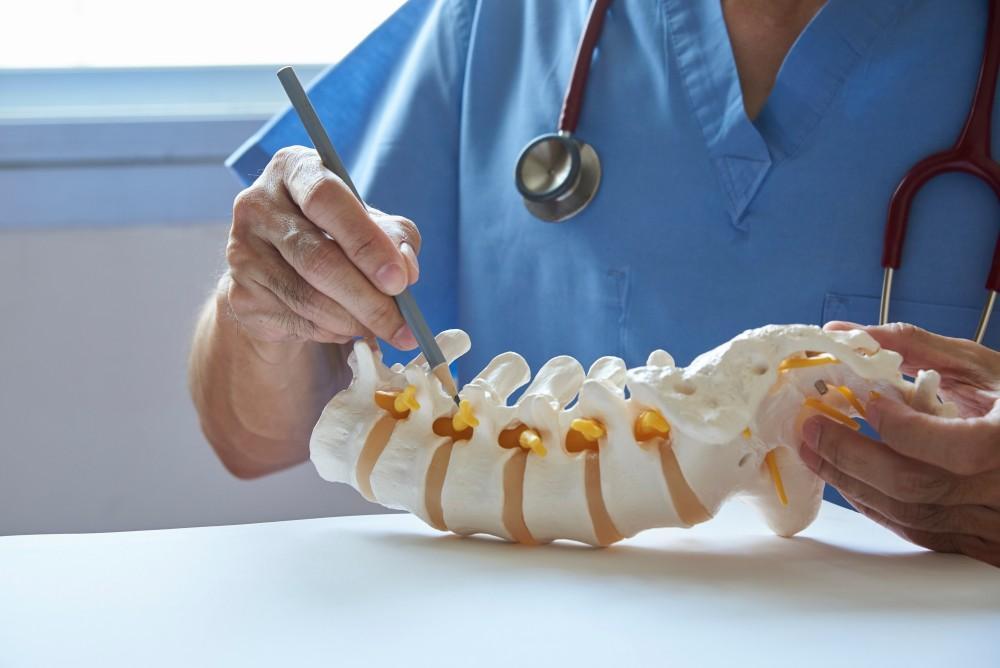
7 Key Benefits of Physical Therapy After Back Surgery

The spine is an amazing structure — strong enough to support your head upright, but flexible enough to let you bend, flex, and twist. Unfortunately, though, it’s not indestructible. Whether due to injury, disease, or just getting older, components may become damaged and stop functioning properly, leaving you with back pain and a limited range of motion.
If conservative options fail and you need back surgery, you may be wondering what your recovery will be like. Everyone is different in their exact needs, but at the same time, there are certain treatment categories everyone goes through. One of these is physical therapy.
At Vertrae®, with locations in Dayton and Springfield, Ohio, Dr. Kamal Woods and his team perform all manner of back surgeries, including minimally invasive procedures and robot-assisted surgery. They know that your back pain journey doesn’t end along with the procedure, which is why they recommend physical therapy after surgery for all their patients. Here are seven reasons why.
A brief look at your spine
An adult human has 24 bony vertebrae that sit one on top of the other in a column, forming your backbone. Each is held together by a pair of joints, known as facet joints, to the bones above and below.
In between each vertebral pair lies an intervertebral disc that consists of a hard outer shell (annulus) and a gel-like interior (nucleus). The discs absorb shock when you move and prevent the bones from grating against each other.
Both the bones and the discs can become damaged, either due to injury or age-related diseases like osteoarthritis (the wear-and-tear kind), bone spurs, and degenerative disc disease (flattening of the disc). If the discs rupture — aka herniate — the oozing material can press on nerve roots located in the interior of the spinal column, called the spinal canal. That may lead to pain, tingling, weakness, and numbness along the nerve’s length. It may be necessary to repair or replace the disc, or alter other structures, to give you relief.
Spinal surgery, though, is only the first step in getting better. The next step takes more time and is more involved, but it can mean the difference between remaining in pain or achieving a full recovery.
What is physical therapy (PT)?
Physical therapy is a type of rehabilitation following an injury or surgery that aims to relieve pain, increase movement and range of motion, and help you live a better and more productive life. You start the process once the acute pain of surgery has passed.
At your first session, your physical therapist examines you and assesses your needs. Expect questions about your pain or other symptoms, your ability to get around or do everyday tasks, your sleep quality, and your medical history. The objective is to determine how well you function and how much you’re impaired, so they can draw up a treatment plan to rehab the areas that need to be strengthened or restored.
Common tests measure:
- How well you can move around, bend, reach, or grasp
- How well you walk or climb steps
- Your posture or balance
Your plan includes your personal goals like functioning and feeling better, plus exercises or other treatment modalities to help you reach them. Some of the exercises you do when you go into the office, while others you do at home between sessions to maintain your results and improve upon them.
Commitment is key — the more effort you put into your therapy, the more quickly and completely you’ll heal.
7 benefits of physical therapy after back surgery
Physical therapy offers seven major benefits following back surgery:
- Eliminates pain and underlying inflammation
- Strengthens and stabilizes the back and neck
- Strengthens muscles surrounding surgical site
- Helps you move safely without reinjury
- Prepares you to do everyday activities like getting in and out of bed or bending over without injury
- Improves posture, which decreases pain and stress at surgical site
- Helps you become as independent as safely possible
How quickly you return to normal function depends on your age, your overall health, and your lifestyle; it varies from one person to another.
Do you need back surgery but worry about your recovery? Vertrae® has you covered with a physical therapy referral tailored to your needs. To learn more, or to schedule a consultation with Dr. Woods, call us at either location, or book online with us today.
You Might Also Enjoy...


4 Benefits of Outpatient Spine Surgery

Am I a Candidate for Kyphoplasty?

Pulled Muscle vs. Pinched Nerve: What's the Difference?

4 Subtle Signs of Sciatica

